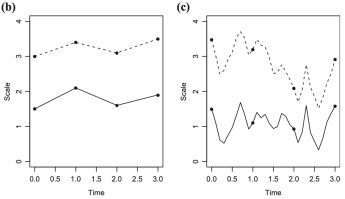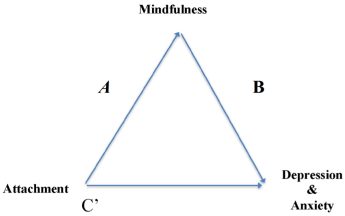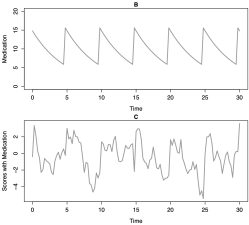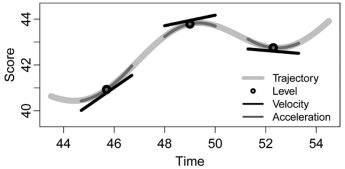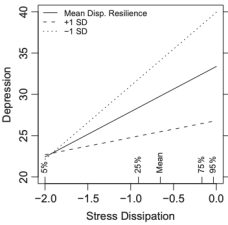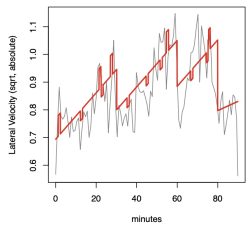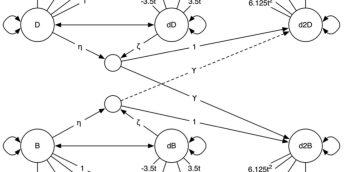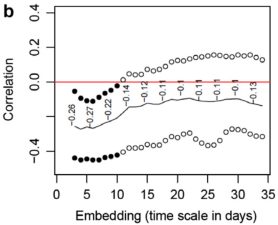Effective interventions may not be limited to changing means, but instead may also include changes to how variables affect each other over time. Continuous time models offer the opportunity to specify differing underlying processes. A substantive example compares models that imply different underlying continuous time processes using panel data.
Category: Substantive Work
Attachment Changes predicting Depression and Anxiety Changes (2017)
Two studies examined the role short-term changes in adult attachment and mindfulness play in depression and general anxiety.
The Modeling of Change and Variability in Nursing Research (2015)
Most methods in statistics are focused on the analysis of mean differences. Mean–difference questions, however, represent only a narrow range of the questions that can be posed. Focusing only on these questions can overlook important questions concerning change and variability. This chapter considers methods to model change and variability.
Using Derivatives to Articulate Change Theories (2015)
A wide variety of models can be understood in terms of the level, velocity, and acceleration of constructs: the zeroth, first, and second derivatives, respectively. Conceptualizing change in terms of derivatives allows precise translation of theory into method and highlights commonly overlooked models of change. We introduce the language of derivatives.
Stress dissipation effects on health and well-being (2014)
Daily data from the NDHWB (n = 783; age range 37–90) were analyzed to produce ‘dynamic characteristic’ estimates of stress input and dissipation. These were used in multi-level modeling (with age and trait stress resistance) to predict depression and health trajectories.
The Reservoir Model of Psychological Capacity (2013)
This article describes a model based on a reservoir. This model might be useful for constructs (e.g., stress), where events might “add up” (e.g., life stressors), but individuals simultaneously take action to “blow off steam” (e.g., engage coping resources). The model is applied to daily self-reports of negative affect and stress from older adults.
Gauging Driver Performance (2011)
This paper examines the estimation of derivatives from in-vehicle measures of vehicle control such as steering wheel angle. At very short time scales many in-vehicle measures may indicate characteristics such as fatigue and inattention. This paper models changes in momentary derivative estimates in a 90-minute simulation with 19 participants.
Maternal Depressive Symptomatology and Child Behavior (2011)
This study investigated reciprocal relationships between adolescent mothers and their children’s well-being through an analysis of the coupling relationship of mothers’ depressive symptomatology and children’s internalizing and externalizing behaviors. The present study used dynamical systems to model time continuously, which allowed for the study of dynamic, transactional effects between members of each dyad.
Perceived Emotion Control During Later Life (2011)
The relationship between global emotion control beliefs and daily affect reports across 56 days were assessed in a sample of 298 older adults. Variability analyses investigating multiple time scales revealed global beliefs were related to lower variance in negative affect and less variable speeds of negative affect change across a range of time scales.
Resilience-As-Process: Negative Affect & Stress (2010)
Resilience is often considered both a trait and a process. The current study proposes a new way to conceptualize resilience-as-process based on dynamical systems modeling, which allows researchers to capture the process of stress management in real time using coupled damped linear oscillator models.
Mood Oscillations Weather and RCBD (2008)
Rapid Cycling Bipolar Disorder outpatients completed twice-daily mood self-ratings for 3 consecutive months. These ratings were matched with local measurements of atmospheric pressure, cloud cover, and temperature. Several alternative second order differential equation models were fit to the data in which mood oscillations in RCBD were allowed to be linearly coupled with daily weather patterns.
